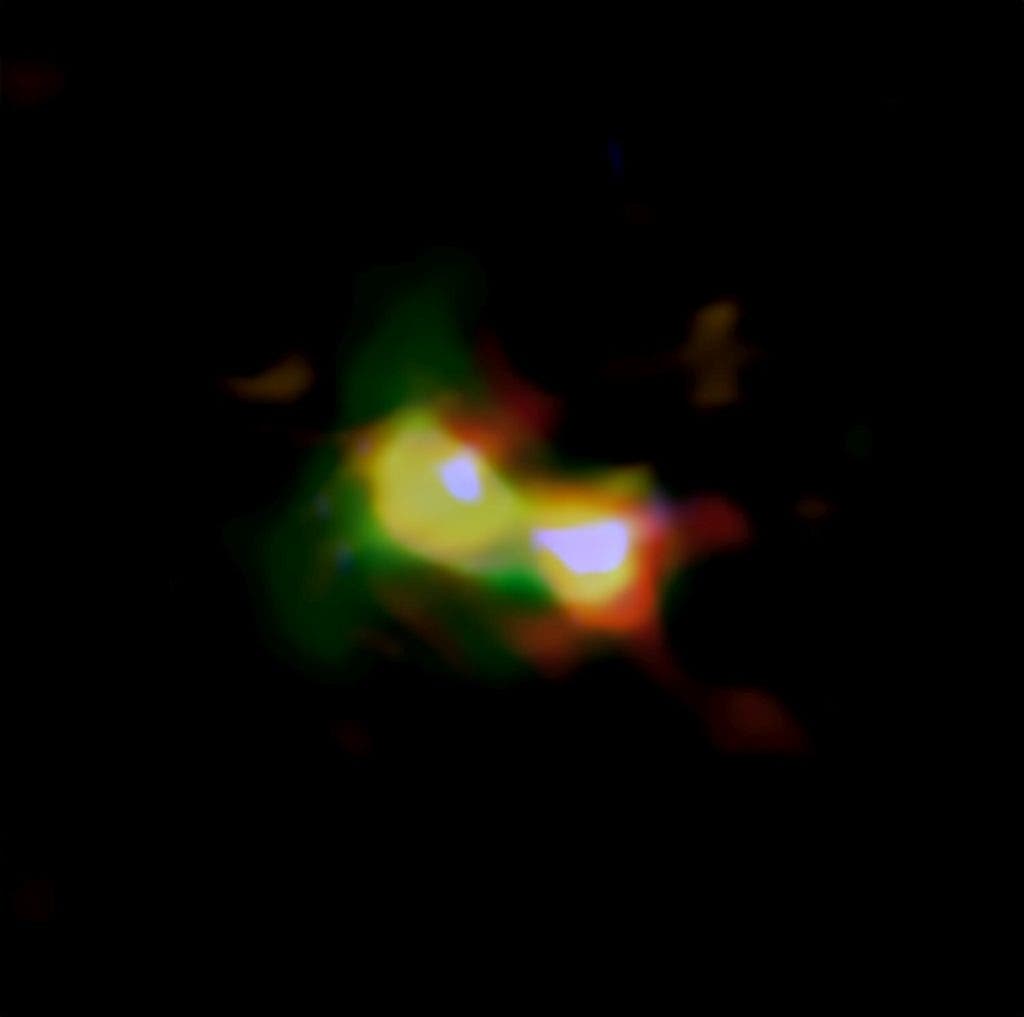
Astronomers working with Atacama Large Millimeter/submillimeter Array (ALMA) in Chile and the Hubble Space Telescope have revealed a historic sight. Using three different signals, the researchers made a composite image of a bright galactic blob located 13 billion light-years away. By comparing these different signals, the astronomers determined that the cosmic object isn’t a galaxy but rather two galaxies merging together. All of this happened just one billion years after the Big Bang, making it the earliest example of merging galaxies discovered so far.
The researchers led by Takuya Hashimoto, a postdoctoral researcher at the Japan Society for the Promotion of Science and Waseda University, analyzed signals of oxygen, carbon, and dust from a far away object known as B14-65666.
Previous observations performed with the Hubble Space Telescope revealed two star clusters in B14-65666. The new observation, however, was performed using multiple signals which carry complementary information. This enabled the researchers to confirm that the two bright blobs form a single system, although they have different speeds. The only viable explanation is that the two objects are, in fact, two galaxies in the process of merging.

Because it took 13 billion years for light from B14-65666 to reach us, what we’re seeing is actually what the two merging galaxies looked like 13 billion years ago. During that time of the early universe, B14-65666 was churning out stars 100 times more actively than the Milky Way. This is another sign of galactic merging because gas compression in colliding galaxies naturally accelerates star formation.
“With rich data from ALMA and HST, combined with advanced data analysis, we could put the pieces together to show that B14-65666 is a pair of merging galaxies in the earliest era of the Universe,” Hashimoto said in a statement. “Detection of radio waves from three components in such a distant object clearly demonstrates ALMA’s high capability to investigate the distant Universe.”
Galaxy mergers are the most violent type of galaxy interaction. They’re also a beautiful sight, as the gravitational forces draw long wispy streams of stars into fluid-like shapes. But despite the destructive force of galactic mergers, collisions and mergers of whole galaxies play a crucial role in their evolution. The Milky Way, for instance, likely underwent many mergers before it reached its current form. In fact, our galaxy has only 4 billion years left to live before it collides with the giant Andromeda Galaxy.
“Our next step is to search for nitrogen, another major chemical element, and even the carbon monoxide molecule,” said Akio Inoue, a professor at Waseda University. “Ultimately, we hope to observationally understand the circulation and accumulation of elements and material in the context of galaxy formation and evolution.”
Was this helpful?



